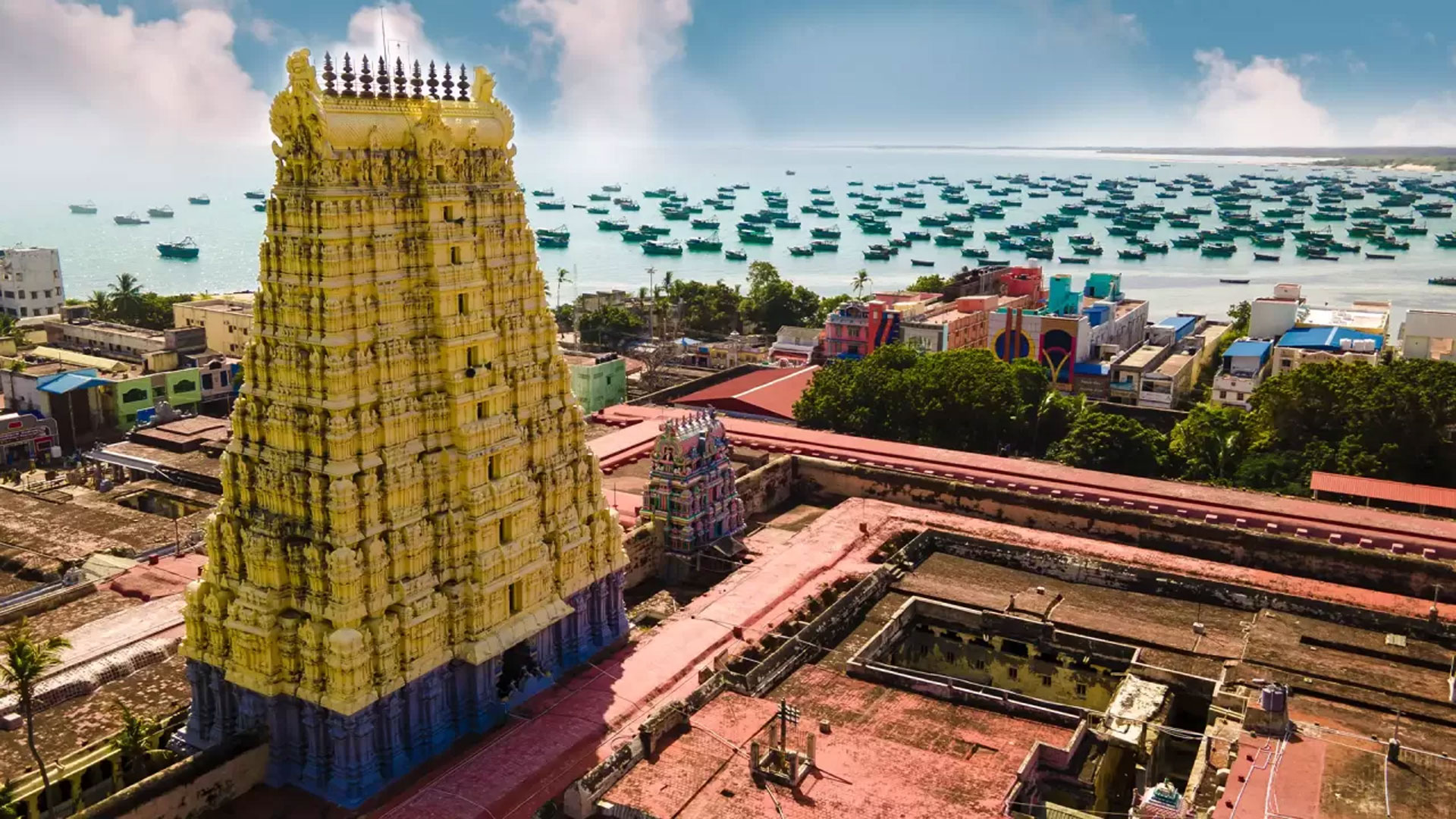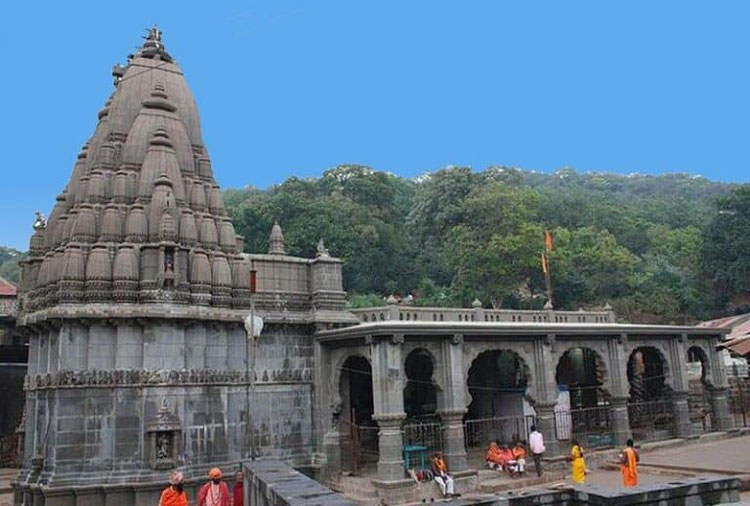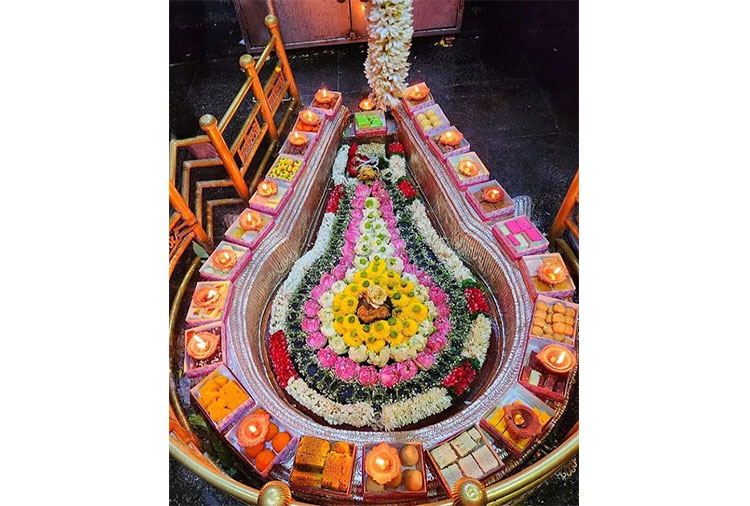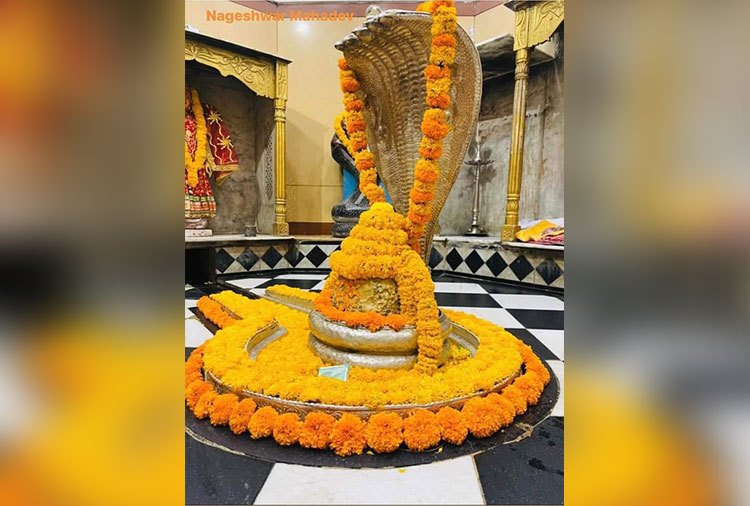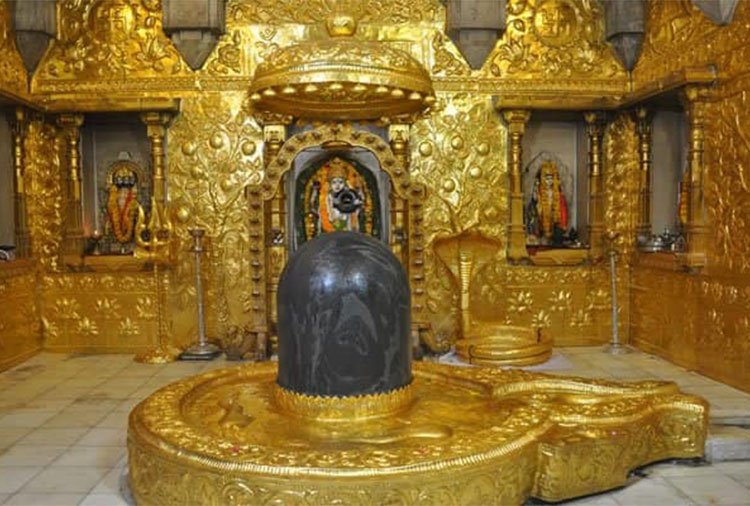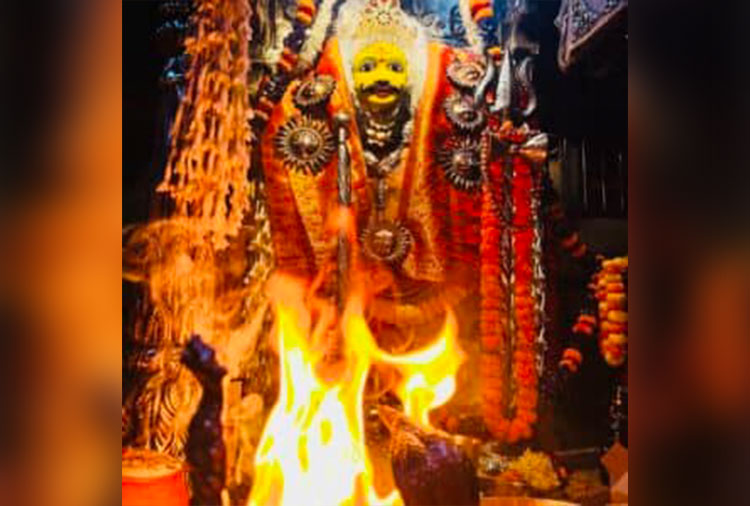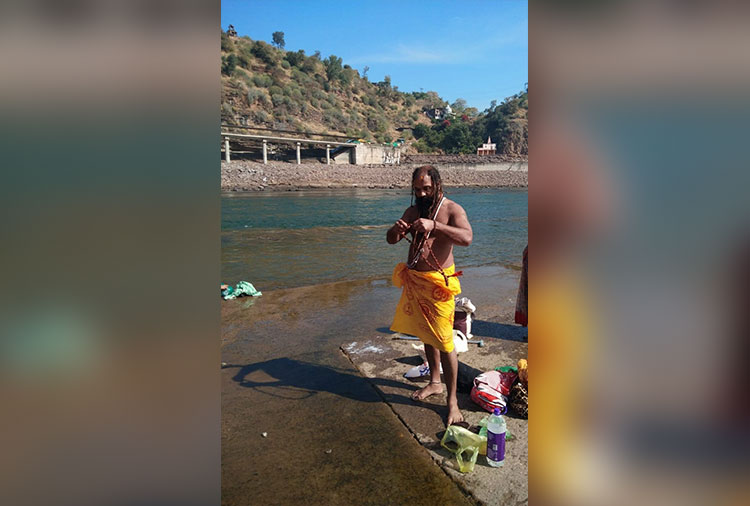The 12 Jyotirlingas
The 12 Jyotirlingas are sacred shrines dedicated to Lord Shiva, one of the principal deities in Hinduism. These shrines are believed to represent the twelve divine manifestations of Shiva and are highly revered by devotees. Each Jyotirlinga is associated with a particular legend and holds unique significance. The twelve Jyotirlingas are located in different parts of India:
1. Somnath (Gujarat) – The first Jyotirlinga, associated with the moon god, Chandra.
2. Mallikarjuna (Andhra Pradesh) – Located at Srisailam, dedicated to Shiva and Parvati.
3. Mahakaleshwar (Madhya Pradesh) – Situated in Ujjain, where Shiva is worshipped as the ruler of time.
4. Omkareshwar (Madhya Pradesh) – Found on an island in the Narmada River, symbolising the cosmic Om sound.
5. Kedarnath (Uttarakhand) – Located in the Himalayas, it represents Shiva as the lord of the field.
6. Bhimashankar (Maharashtra) – Found in Pune, linked with the demon Bhima.
7. Kashi Vishwanath (Uttar Pradesh) – Situated in Varanasi, regarded as the ruler of the universe.
8. Trimbakeshwar (Maharashtra) – Located in Trimbak, associated with the trinity of Brahma, Vishnu, and Shiva.
9. Baidyanath (Jharkhand/ Bihar) – Connected with healing and medicine.
10. Ramanath (Tamil Nadu) – Located in Rameswaram, where Shiva is worshipped as a guardian of the divine.
11. Nageshwar (Gujarat) – Also known as Aundha Nageshwar, linked with the serpent deity.
12. Vaijnath (Maharashtra) – Sometimes identified with the Vaijnath Temple in Parli, though interpretations vary.
Pilgrims often visit these shrines to seek blessings and spiritual fulfilment, as they are considered powerful centres of Shiva's divine presence.
Shri Bhimashankar Jyotirlinga, Maharashtra
Travel Date: 2024 January 23
Temple dedicated to the god of gods, Bhagwan Shiva the Mahadeva, this temple is located in the center of the city and it has been for past 100+ years, the origin of temple is not known, Mataji named Maa Ganga and Sadhu(Sage) named Ram Giri Bapu are known to have re-built and were the care taker of the temple in the 40-50's. The temple is visited daily by the local people and they are blessed by Mahadev. Har Har Mahadev !!!
Shri Nageshwar Jyotirlinga, Gujarat
Travel Date: 2024 January 28
Shri Nageshwar Jyotirlinga, also known as Aundha Nageshwar or Nagnath, is one of the twelve Jyotirlingas dedicated to Lord Shiva, revered in Hindu tradition. Located in Aundha, Gujarat, it is a significant pilgrimage site for devotees.
The term "Jyotirlinga" refers to a form of Shiva representing his infinite nature. Each Jyotirlinga is associated with specific legends and mythology. Shri Nageshwar Jyotirlinga is particularly associated with the story of a demon named Daruka who had terrorized the gods and was ultimately subdued by Shiva.
The temple dedicated to Shri Nageshwar Jyotirlinga is known for its ancient architecture and spiritual ambiance. Devotees visit the site to seek blessings and partake in religious rituals. The temple is not only a sacred space but also a symbol of faith and devotion within the broader tradition of Shiva worship.
Aundha Nagnath Jyotirlinga, Maharashtra
Travel Date: 2024 January 28
Aundha Nagnath Jyotirlinga is one of the twelve Jyotirlingas dedicated to Lord Shiva, located in Aundha, Hingoli district, Maharashtra, India. Like the other Jyotirlingas, it is a revered site for Shiva devotees and holds significant religious importance.
The name "Nagnath" translates to "Lord of the Nagas" or "Lord of the Serpents," reflecting the deity's association with serpents in Hindu mythology. The temple dedicated to Aundha Nagnath is believed to be one of the ancient and historically important Jyotirlinga shrines.
According to legend, the temple is linked to the story of a demon named Daruka, who had been a tormentor of the gods. To protect the gods and restore cosmic balance, Shiva appeared to vanquish the demon. In honor of this divine intervention, the shrine at Aundha was established.
The temple is known for its traditional architecture and tranquil environment, attracting pilgrims who seek blessings and engage in devotional practices. It is also a place of historical and cultural significance, reflecting the rich heritage of Shiva worship in India.
Shri Ghrishneshwar Jyotirlinga, Maharashtra
Travel Date: 2024 January 21
Shri Ghrishneshwar Jyotirlinga is one of the twelve revered Jyotirlingas of Lord Shiva and is located near Ellora Caves in the state of Maharashtra, India. It is considered the last or twelfth Jyotirlinga in the sacred list of Shiva shrines.
The temple is an important pilgrimage site for Hindus and has a rich history, with its origins dating back to ancient times. The current structure was rebuilt in the 18th century by Queen Ahilyabai Holkar of Indore. The temple is constructed in traditional Maharashtrian temple architecture, featuring beautifully carved stone pillars and a five-tiered spire.
The legend of Ghrishneshwar is associated with a devotee named Ghushma, who worshipped Lord Shiva with intense devotion. Pleased with her devotion, Shiva appeared in the form of a Jyotirlinga at this site, and the temple was named Ghrishneshwar after her.
Its proximity to the famous Ellora Caves, a UNESCO World Heritage Site, adds to its significance, making it a popular destination for pilgrims and tourists alike.
Shri Somnath Mahadev Jyotirlinga, Gujarat
Travel Date: 2023 December 25
Shri Somnath Mahadev Jyotirlinga is one of the twelve sacred Jyotirlingas dedicated to Lord Shiva and is located in Prabhas Patan near Veraval in the state of Gujarat, India. It holds immense religious significance as it is considered the first of the Jyotirlingas, representing the eternal and unchanging nature of Lord Shiva. The Somnath Temple has a long and storied history, having been destroyed and rebuilt multiple times due to invasions. The present temple structure was reconstructed in 1951 under the leadership of Sardar Vallabhbhai Patel. The temple’s architecture reflects Chalukya style, with intricate carvings and a majestic spire that towers over the Arabian Sea. The legend of Somnath is tied to the moon god, Chandra (Soma), who is said to have built the original temple to worship Lord Shiva after being cursed by his father-in-law, Daksha. Worshipping Shiva at Somnath is believed to have restored Chandra's brilliance, and thus the site is known as Somnath, meaning "Protector of the Moon." The temple is not only a place of religious worship but also an architectural wonder, attracting pilgrims and tourists from across the world. The location by the sea adds to its serene beauty, making it a spiritually uplifting and scenic destination.
Shri Vaijnath Jyotirlinga, Parali
Travel Date: 2024 January 22
Shri Vaijnath Jyotirlinga, also known as Parli Vaijnath, is one of the twelve sacred Jyotirlingas dedicated to Lord Shiva. It is located in the town of Parli in the Beed district of Maharashtra, India. The temple is a significant pilgrimage site for devotees of Shiva, who believe that worshipping at this Jyotirlinga can help alleviate suffering and bring healing, as the name Vaijnath translates to "Lord of Physicians."
According to Hindu legends, the Vaijnath Jyotirlinga is associated with the story of the demon king Ravana. It is believed that Ravana performed intense penance to please Lord Shiva, hoping to gain invincibility and power. Pleased with Ravana's devotion, Shiva granted him the Atma Linga (a powerful form of the deity). However, through divine intervention, the Atma Linga was placed at Parli and transformed into the Jyotirlinga, where it remains worshipped today.
The temple is built in traditional Hemadpanthi style, featuring stone architecture and a peaceful, spiritual atmosphere. Devotees visit the shrine to seek blessings, healing, and liberation. The Vaijnath Jyotirlinga is considered especially powerful for its ability to relieve pain and suffering, making it a symbol of spiritual and physical healing.
Shri Trimbakeshwar Jyotirlinga, Maharashtra
Travel Date: 2024 January 21
Shri Trimbakeshwar Jyotirlinga is one of the twelve Jyotirlingas of Lord Shiva, located in the town of Trimbak in the Nashik district of Maharashtra, India. It is an important pilgrimage site, especially for devotees of Shiva. The temple is situated near the Brahmagiri Hills, which are considered the source of the sacred Godavari River, often called the Ganga of the South. What makes Trimbakeshwar unique is that the Jyotirlinga here has a three-faced symbol that represents Shiva, Vishnu, and Brahma, the holy trinity of Hinduism. This is unlike other Jyotirlingas, which typically represent only Lord Shiva. The lingam is housed in a small pit, constantly filled with water due to the nearby river. According to Hindu mythology, the site is linked to the sage Gautama and a curse that led to the creation of the Godavari River. To cleanse his sins, Gautama worshipped Lord Shiva, who appeared and agreed to reside there in the form of a Jyotirlinga. The Trimbakeshwar Temple is built in the Nagara style of architecture and features a sacred pond called Kushavarta Kund, where pilgrims often take a ritual bath. Many religious ceremonies, including Narayan Nagbali, a unique ritual for removing ancestral curses, are performed at this temple. It's a spiritual and scenic destination, attracting thousands of devotees and tourists each year.
Shri Kashi Vishwanath Jyotirlinga, Uttar Pradesh
Travel Date: 2023 August 12
Shri Kashi Vishwanath Jyotirlinga is one of the twelve sacred Jyotirlingas dedicated to Lord Shiva, located in Varanasi, Uttar Pradesh, one of the holiest cities in Hinduism. Known as the Kashi Vishwanath Temple, it is situated on the banks of the Ganges River and is a major pilgrimage site for devotees seeking blessings from Lord Shiva, who is worshipped here as Vishwanath, meaning "Lord of the Universe."
Varanasi, also known as Kashi, is believed to be one of the oldest living cities in the world, and Hindus consider it the city of liberation (moksha). The temple has immense spiritual significance, as it is said that those who die in Kashi attain salvation and are freed from the cycle of birth and death.
The Kashi Vishwanath Temple has been destroyed and rebuilt several times throughout history, most recently reconstructed by Queen Ahilyabai Holkar of Indore in 1780. The temple's golden spire and dome were later added by Maharaja Ranjit Singh in the 19th century.
The Jyotirlinga here is considered one of the most powerful manifestations of Lord Shiva, representing his infinite energy and presence. Pilgrims visit the temple to offer prayers, take a holy dip in the Ganges, and perform rituals seeking blessings, spiritual peace, and liberation.
The temple's location in the ancient and spiritually significant city of Varanasi enhances its importance, making it a must-visit for devotees and tourists alike.
Shri Kedarnath Jyotirlinga, Uttarakhand
Travel Date: 2023 August 09
Shri Kedarnath Jyotirlinga is one of the twelve sacred Jyotirlingas dedicated to Lord Shiva and is located in the Kedarnath region of Uttarakhand, nestled in the Himalayan mountains at an altitude of about 3,583 meters (11,755 feet). It is one of the most important pilgrimage sites in Hinduism and is also a part of the Char Dham Yatra, which includes four holy sites in the Himalayas. The Kedarnath Temple, believed to have been originally built by the Pandavas from the Mahabharata, is known for its remote and serene setting, surrounded by snow-capped peaks and the Mandakini River flowing nearby. The temple that stands today was later rebuilt by Adi Shankaracharya in the 8th century. According to mythology, after the Kurukshetra War, the Pandavas sought Lord Shiva to absolve themselves of the sins of the war. However, Shiva, not wanting to forgive them easily, took the form of a bull and tried to escape. When the Pandavas discovered him, Shiva's body parts appeared at different locations, with the hump manifesting at Kedarnath, forming the Jyotirlinga. The Kedarnath Jyotirlinga is revered as a symbol of Lord Shiva's presence and is considered one of the holiest sites for worship. Due to its high-altitude location, the temple is accessible only during the summer months (April to November), as heavy snowfall makes it inaccessible during winter. Pilgrims visit the temple for its religious significance, stunning natural beauty, and the sense of peace and spiritual connection it offers in the midst of the Himalayan wilderness.
Shri Mahakaleshwar Jyotirlinga, Madhya Pradesh
Travel Date: 2022 December 09
Shri Mahakaleshwar Jyotirlinga is one of the twelve revered Jyotirlingas dedicated to Lord Shiva, located in the ancient city of Ujjain in Madhya Pradesh, India. It is considered one of the most sacred Shiva temples and holds great significance for Hindus. The temple is situated on the banks of the Shipra River, and Lord Shiva is worshipped here as Mahakal, meaning "the ruler of time" or "the lord of death."
The Mahakaleshwar Temple is unique because it houses a Swayambhu (self-manifested) Jyotirlinga, which is believed to have emerged on its own, unlike other lingams that are installed by devotees. The temple is known for its distinct Bhasma Aarti, a morning ritual where the deity is worshipped with sacred ash, a symbol of Shiva’s association with destruction and rebirth.
According to mythology, the Mahakaleshwar Jyotirlinga is linked to a demon named Dushana, who terrorized the people of Ujjain. Lord Shiva appeared as Mahakal to protect the city and vanquish the demon, manifesting himself in the form of the Jyotirlinga.
The temple's architecture is a blend of Maratha, Bhumija, and Chalukya styles, featuring carved stone walls, towering spires, and a serene atmosphere. The Jyotirlinga is placed in an underground sanctum, which adds to the temple's mystique.
Mahakaleshwar is also one of the 18 Maha Shakti Peethas, making it a prominent pilgrimage site for those seeking spiritual enlightenment and liberation from the cycle of life and death.
Shri Omkareshwar Jyotirlinga, Madhya Pradesh
Travel Date: 2022 December 08
Shri Omkareshwar Jyotirlinga is one of the twelve sacred Jyotirlingas dedicated to Lord Shiva, located on an island called Mandhata in the Narmada River in Madhya Pradesh, India. The island is shaped like the Hindu sacred symbol Om, which is why the temple is named Omkareshwar, meaning "Lord of Om."
The Omkareshwar Temple is one of the major pilgrimage sites in Hinduism and holds great spiritual significance. The Jyotirlinga here represents Lord Shiva in the form of Omkareshwar, symbolising the divine presence that pervades the universe.
Shri Bhramaramba Mallikarjuna Jyotirlinga, Andhra Pradesh
Travel Date: 2022 September 21
Shri Bhramaramba Mallikarjuna Jyotirlinga is a revered shrine located in Srisailam, Andhra Pradesh, and is one of the twelve Jyotirlingas dedicated to Lord Shiva. This sacred site is unique for housing both a Jyotirlinga and a Shakti Peetha, making it a significant destination for worshippers of both Shiva and the goddess Bhramaramba, an aspect of Durga. Perched on Srisailam Hill, the temple complex features traditional Dravidian architecture, showcasing intricate carvings and historical grandeur. According to legend, the site is associated with ancient sages and divine events, adding to its spiritual and cultural importance. Devotees visit the temple to seek blessings and partake in rituals amidst the serene and picturesque setting of the surrounding hills and river.








